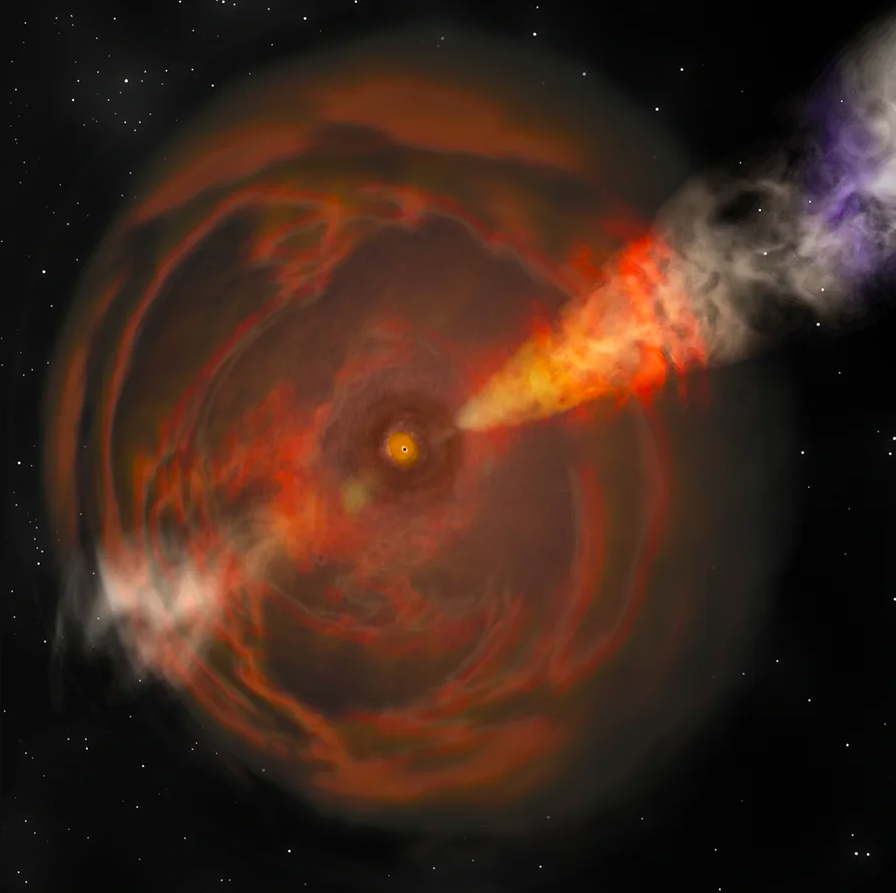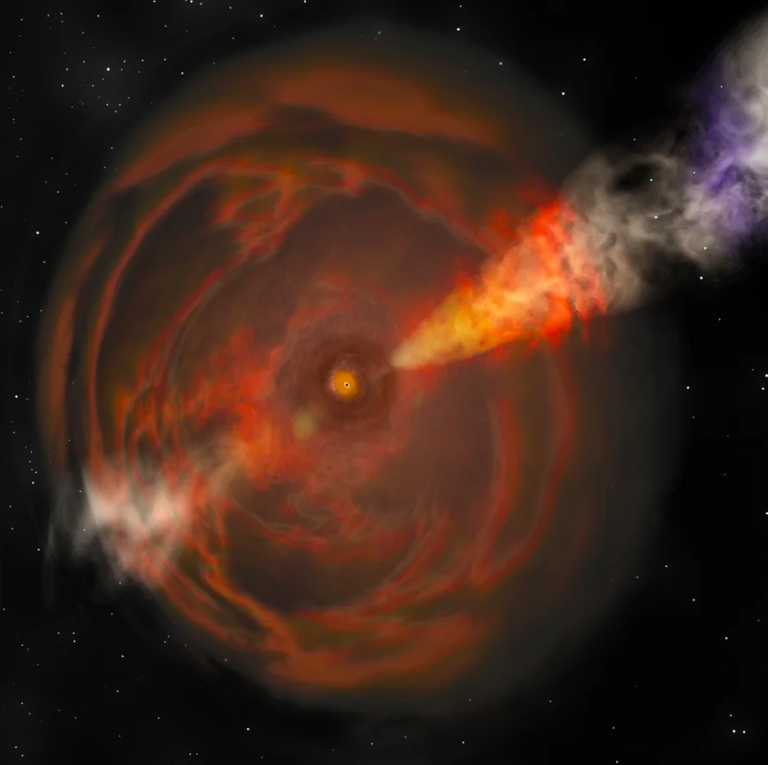Puzzling Space Blast Dubbed ‘Tasmanian Devil’ Leaves Astronomers Perplexed
Researchers continue to grapple with the cause behind remarkably luminous space bursts, yet an unexpected observation could potentially provide crucial hints.
A space explosion named the Tasmanian devil has bewildered astronomers by displaying repeated bursts of peak brightness, occurring over a dozen times months after the initial occurrence. While this observation introduces fresh uncertainties, it holds the potential to narrow down the possible causes of such phenomena known as luminous fast blue optical transients (LFBOTs).

These enigmatic bursts, observed throughout the cosmos, remain a mystery. The first, named AT2018cow or the Cow, emerged in 2018 within a galaxy approximately 60 million parsecs (200 million light-years) from Earth. The Cow stood out for shining up to 100 times brighter than a typical supernova before fading within a few days—a rapid process compared to the weeks-long dimming of a supernova.
Subsequently, over half a dozen LFBOTs have been identified, such as the Koala, the Camel, and most recently, the Finch. Yet, the origins of these events continue to puzzle astronomers. Proposed explanations include failed supernovae—stars collapsing into a black hole or neutron star before their explosion—intermediate-mass black holes devouring other stars, or interactions between objects and Wolf-Rayet stars, which are hot and luminous.
In a study released on November 15 in Nature, a team led by astronomer Anna Ho at Cornell University reported on fresh activity observed from an LFBOT discovered around 1 billion parsecs away in September 2022—formally known as AT2022tsd, also dubbed the Tasmanian devil. Utilizing the Magellan-Baade telescope in Chile, the researchers documented repeated bursts of peak brightness from the Tasmanian devil, beginning in December 2022. A total of 14 of these flare-ups were observed, each lasting only minutes.
“Such flashes haven’t been witnessed in LFBOTs before,” explains Ho, highlighting that each unexpected burst matched the intensity of the initial LFBOT.
“This observation is remarkable,” remarks Raffaella Margutti, an astrophysicist at the University of California, Berkeley. “It’s unprecedented and raises numerous questions.”
COLLAPSING STAR
Ho suggests that the flaring might lend support to the concept of a failed supernova, involving a massive star, around 20 times the mass of the Sun, exhausting its fuel and collapsing. This process leaves behind a dense neutron star or black hole within the remnants of the surrounding star. “We suspect these flashes may be originating from either a neutron star or a black hole formed during the initial LFBOT event,” she explains.
If the neutron star or black hole within the LFBOT had potent energy jets emanating from its poles, this phenomenon could account for the flaring. These jets would discharge into space as the object rotated. If these jets consistently aligned towards Earth, it might elucidate the bursts of light observed from the Tasmanian devil. “This might be one of those rare instances when it was directed toward us,” notes Ho.
Brian Metzger, an astrophysicist at Columbia University, regards the observation as “remarkable” and reinforcing previous conclusions, suggesting that LFBOTs involve electrons nearing the speed of light, undergoing heating or acceleration within an outflow.
Further observations could aid in determining the object’s mass, providing definitive insight into its origin. “An intermediate-mass black hole is a 10,000-solar-mass black hole,” Ho explains. “A failed supernova is more like 10 or 100 solar masses.” Examining the flares could help estimate the object’s mass. “Observing a rapidly changing signal allows estimation of the emitting object’s size based on the speed of signal variation,” she adds. Higher speeds might indicate rapid rotation, implying a lower mass.
Margutti remarks that the flaring “certainly indicates that LFBOTs are distinct from supernova explosions.” She suggests that the jets might draw energy from accretion onto a black hole, potentially originating from a companion star.
The upcoming Vera C. Rubin Observatory in Chile, set to commence a comprehensive universe survey next year, is anticipated to discover “10 to 100 times more of these objects,” according to Ho. This influx of discoveries could assist astronomers in pinpointing their causes. Detecting and studying these objects shortly after their initial explosion will be critical. “Currently, by the time we notice them, they’re usually two to three weeks old,” explains Ho. “We need to identify them much more promptly.”
This article is reproduced with permission and was first published on November 15, 2023.
Do not forget to share your opinion with us to provide you with the best posts !





0 Comments